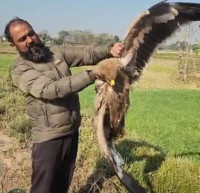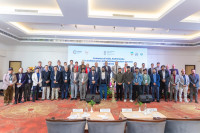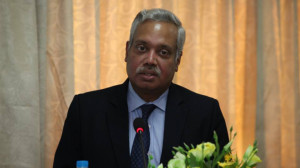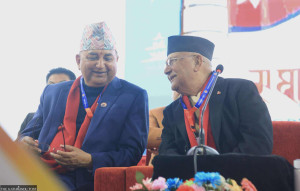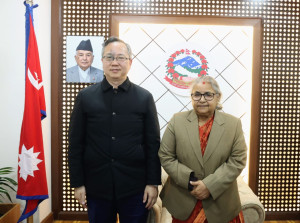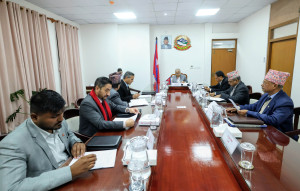National
2,642 rounds of live ammunition fired over two days of Gen Z protests: Police
Records show most bullets were fired from lethal weapons such as INSAS, SLRs and pistols.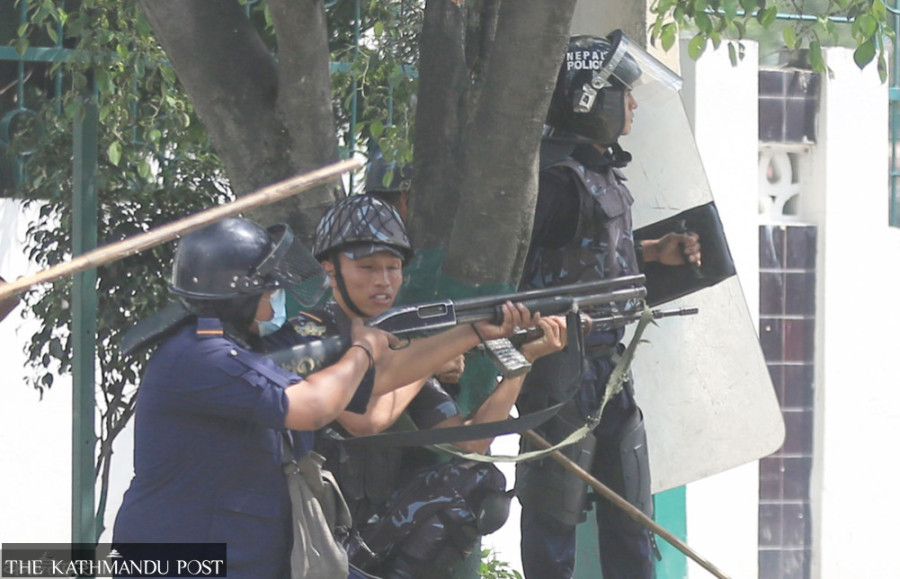
Gaurav Pokharel
Records maintained by the Nepal Police show that excessive force was used to suppress the Gen Z uprising two weeks ago. According to a preliminary report prepared by the police, there were 13,182 instances of firing across the country over two days.
Most of the bullets fired were from lethal weapons, including INSAS, SLR, and pistols. Post-mortem reports of the deceased at Tribhuvan University Teaching Hospital, Maharajgunj, also noted that high-velocity bullets caused most deaths.
Internal police reports indicate that 2,642 rounds of live ammunition were fired over the two days. In addition, 1,884 rubber bullets, 2,377 instances of warning shots, and 6,279 tear gas shells were used.
Most firing happened in the Kathmandu Valley, according to the preliminary details. In the valley alone, 1,329 live bullets, 1,420 rubber bullets, and 1,046 warning shots were recorded. Additionally, 3,096 tear gas shells were fired. In total, the Kathmandu Valley witnessed 6,891 instances of firing.
After the Valley, the highest use of force was reported in Madhesh province, with 1,921 firings, followed by Koshi 1,568, Karnali 932, Sudurpaschim 763, Lumbini 619, Gandaki 306, and other districts of Bagmati province 181 firings.
“This is only a preliminary record prepared by the police. The numbers could rise,” said a Home Ministry official.
Nepal Police spokesperson Binod Ghimire said investigations on how many bullets were fired and how many were lost continue. “A committee led by Deputy Inspector General Deepak Regmi from the Police Headquarters is working on this,” he said, adding that officers from various provinces are members of the committee.
Officials said that destruction and arson at the Valley Police Office in Ranipokhari also led to the loss of weapon and ammunition records. “Hence, we have started cross-checking with data from the Police Headquarters,” said a committee member.
Serious lapses in intelligence
Senior officers of Nepal Police themselves say that the intelligence gathering and analysis before the Gen Z movement were weak. According to one police officer, only 4–5 thousand protesters were expected on September 8.
“Police had two options that day to control the crowd — either show a strong force to exert psychological pressure or maintain a minimal presence to make it appear as a normal situation,” a senior officer said. “The then Home Minister Ramesh Lekhak also initially directed us to adopt the minimal presence strategy.”
Following the minister’s instructions, Police Headquarters planned to increase police presence inside the Parliament as a backup while maintaining minimal presence on the streets. Experts say this strategy was flawed.
“Declaring a prohibited area means preventing entry. Police should have stopped protesters before reaching Parliament,” said former Additional Inspector General Uttamraj Subedi. “Procedures that should have been completed before firing were not implemented. Had they been, the situation could have been different.”
Conversations with officers at Police Headquarters, the Valley Police Office, and field units indicate that police underestimated the movement from the start. Barricades were initially set up only in the middle of the street.
“Initially, barricades were only in the centre, but later protesters approached from other lanes,” said a field officer. “Gradually, people gathered from Shankhamul, Old Baneshwar, and Tinkune, making the situation uncontrollable.”
Intelligence failures of security agencies
The National Investigation Department (NID) handles domestic intelligence, with even foreign intelligence if and when needed. Yet, some officials say NID could not provide accurate information.
“Without concrete information on who could be present at the gatherings and what plans they were making, our preparations were weak,” said a security officer. “The Nepali Army also has a secret unit, the Directorate of Military Intelligence, and the Armed Police Force has a separate unit. Yet none could provide enough intelligence.”
NID officials claim that even when they did provide intelligence, the government often did not take it seriously. “How the recipients use the information determines its effectiveness,” an NID officer said.
Gen Z protesters organised a demonstration on September 8 against social media restrictions and corruption. Youths coordinated via social media platforms including Discord and Reddit gathered at Maitighar and advanced. They broke through barricades at 12:35pm. After the protesters hung a banner reading “Wake Up Nepal” on Baneshwar’s skywalk and surrounded Parliament, police began firing.
Former AIG Subedi said the STF (Special Task Force) inside Parliament fired the bullets. According to police sources, other police teams inside also joined after protesters broke the barricades. Lethal weapons, including SLR, INSAS, and pistols, were used.
On the first day, the death of 19 people due to excessive police suppression fuelled public anger, and more protesters took to the streets the next day. The total death toll over both days reached 75, said central police spokesperson Ghimire.
Five juveniles in Nepalgunj’s correctional facility, two prisoners in Dhading, and three prisoners in Ramechhap also died. Twenty people died when several Bhatbhateni Supermarkets were set on fire. Three police officers died from being beaten by protesters. Most other deaths were due to police bullets.
Mohna Ansari, a former member of the National Human Rights Commission, said the use of bullets during the movement was excessive. “International crowd control principles mandate the use of non-lethal weapons. Shooting protesters in the head is even more serious. Lethal force should only be used against heavily armed criminals,” she said.
Ansari added that she could not understand the risk assessment of the police. “Even during the Madhesh movement, bullets were fired, but the number used this time is unprecedented. Videos show even injured protesters being shot while being carried in ambulances.”
According to the Local Administration Act, 2028, security personnel are authorised to use firearms only as a last resort when maintaining peace is impossible. Even then, protesters should be warned that bullets may be fired if they do not disperse. Even then, bullets should be aimed at the legs after warning. Post-mortem reports show most bullets hit above the waist.
On September 9, the administration issued a curfew at 12:30pm to control the situation. After public property was damaged, then Kathmandu Chief District Officer Chhabi Rijal ordered police to use force. Senior Superintendent of Police Bishwa Adhikari led police deployment, with Deputy Superintendent of Police Sundar Tiwari as field commander.
Tiwari had also led police operations criticised for excessive force during the pro-monarchy demonstration on March 28. Currently, both the officers and Tiwari have been transferred.
Senior criminal law advocate Satish Krishna Kharel said targeting protesters’ heads was unprofessional. “I suspect it was done to provoke the situation. Otherwise, why would police skip other measures and use such excessive force?.”
By the evening of September 8, nineteen people had died in Kathmandu and two in Koshi province. After this, the National Security Council held an emergency meeting. Then Prime Minister KP Sharma Oli questioned security chiefs, saying such large-scale shootings had never occurred before.
Security officials claimed bullets were fired only after protesters breached prohibited zones and tried to enter Parliament. “Given the time constraints, we told the government a political decision was needed to calm the situation,” said one security chief. “The political decision meant resignation, which angered Oli.”




 10.12°C Kathmandu
10.12°C Kathmandu

